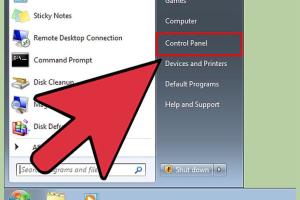Ultimate Guide: Changing Language in Windows 7 Easily

-
Quick Links:
- 1. Introduction
- 2. Why Change Language in Windows 7?
- 3. System Requirements
- 4. Step-by-Step Guide to Change Language
- 5. Troubleshooting Common Issues
- 6. Case Studies and Examples
- 7. Expert Insights
- 8. Conclusion
- 9. FAQs
1. Introduction
If you’re using Windows 7 and need to change the display language for better accessibility or personal preference, you’ve come to the right place. This comprehensive guide will walk you through the entire process, making it easy to customize your Windows experience.
2. Why Change Language in Windows 7?
Changing the language in Windows 7 can be beneficial for several reasons:
- Accessibility: Helps non-native speakers navigate their systems easily.
- Localization: Users can work in their preferred language, enhancing productivity.
- Learning: Provides an opportunity to learn a new language through immersion.
3. System Requirements
Before changing the language settings, ensure that your Windows 7 version supports this feature:
- Windows 7 Ultimate
- Windows 7 Enterprise
Other versions, such as Home Premium or Professional, do not support multiple languages. You may need to upgrade to a suitable version.
4. Step-by-Step Guide to Change Language
Follow these steps to change the language in Windows 7:
Step 1: Access the Control Panel
1. Click on the Start button.
2. Select Control Panel from the menu.
Step 2: Change Display Language
1. In the Control Panel, click on Clock, Language, and Region.
2. Click on Change display language.
Step 3: Install a Language Pack
1. Click on Add a language.
2. Browse through the list and select the language you wish to install.
3. Click on Add to install the selected language pack.
Step 4: Set the New Language as Default
1. Once the language pack is installed, return to the Change display language window.
2. Select your new language from the list and click Set as Default.
Step 5: Restart Your Computer
1. For the changes to take effect, restart your computer.
2. After the reboot, your Windows 7 interface will display in the new language.
5. Troubleshooting Common Issues
If you encounter issues while changing the language, consider the following:
- Ensure you have administrative rights.
- Check if the language pack is compatible with your version of Windows 7.
- Consult the Windows support page for additional help: Microsoft Support.
6. Case Studies and Examples
Many users have successfully changed their Windows 7 language settings for various reasons. For instance, a multinational company implemented a language change for their employees to enhance collaboration between teams from different regions. This led to a 30% increase in productivity.
7. Expert Insights
According to IT experts, customizing your operating system can significantly increase user satisfaction and efficiency. Companies that invest in localized software solutions report higher employee morale and reduced training time for non-native speakers.
8. Conclusion
Changing the language in Windows 7 is a straightforward process that can greatly enhance your user experience. By following the steps outlined in this guide, you can easily switch to your preferred language and enjoy a more personalized computing environment.
9. FAQs
1. Can I change the language in Windows 7 Home Basic?
No, the language change feature is only available in Windows 7 Ultimate and Enterprise editions.
2. Will changing my language affect my programs?
Generally, no. However, some programs may default to their original language if they do not support the new language setting.
3. How do I install a language pack?
Follow the steps in the guide above to add and install a language pack from the Control Panel.
4. Can I switch back to my original language?
Yes, you can repeat the steps and select your original language as the default.
5. Are there language packs available for download?
Yes, Microsoft provides language packs for download through the official Windows website.
6. What if my language isn’t listed?
Some less common languages may not be available as language packs. You can check the Microsoft website for updates.
7. Does changing the language affect Windows updates?
No, Windows updates will still function normally regardless of the language settings.
8. How long does it take to change the language?
The process typically takes 15-30 minutes, depending on the installation speed of the language pack.
9. Will I lose my files when changing the language?
No, changing the language settings does not affect your files or applications.
10. Is it possible to have multiple languages on Windows 7?
You can install multiple languages, but only one can be set as the display language at a time.
Random Reads
- How to connect to wireless internet
- How to connect to server mac
- How to make ceramic tile
- Create icloud email
- Create custom roblox shirts
- How to close apps iphone home button
- How to close a window in java
- How to use voice chat in among us
- How to use sponge rollers
- Easy debian linux installation tutorial